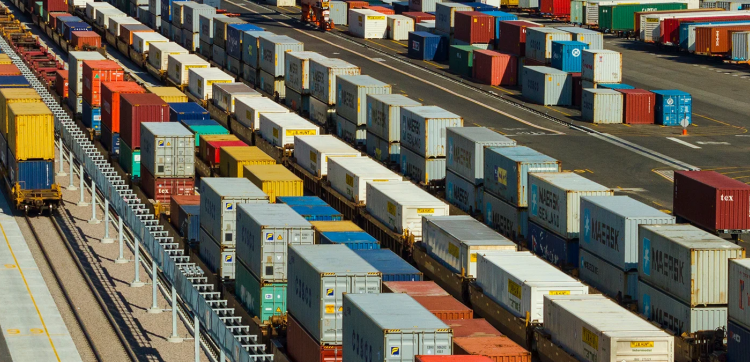Presentation regarding the directive "on weights and dimensions" 15/03/24
< Back to listSource: https://igtl.pl/content/wystapienie-ws-dyrektywy-o-wagach-i-wymiarach
Author: POLISH CHAMBER OF COMMERCE FOR LAND TRANSPORT
Presentation regarding the directive "on weights and dimensions"

March 15 this year The Land Transport Chamber of Commerce, the "Railway Business Forum", the Association of Independent Railway Carriers and the "ProKolej" Foundation requested the Minister of Infrastructure for urgent consultations with the industry regarding the ongoing legislative process at the EU level regarding changes to Council Directive 96/ 53/EC of 25 July 1996 laying down the maximum permissible dimensions for certain road vehicles circulating within the Community in national and international traffic and the maximum permissible loads in international traffic. According to the organization, the direction of changes proposed by the European Commission and the report of the Transport and Tourism Committee (TRAN) approved by the European Parliament are harmful to rail and intermodal transport and are in clear contradiction with the goals and actions for sustainable transport recorded in official EU and national documents . In the unanimous opinion of industry organizations representing Polish companies operating in the rail and intermodal freight transport sector, it is necessary to take decisive actions at the level of the EU Council to ensure that the approach adopted so far is not reflected in the final text of the compromise reached during the trilogue.
The most important issue in the work on amending the directive are the regulations regarding the authorization of national and, in particular, cross-border traffic of trucks weighing up to 44 tons and the possibility of using long and heavy road sets as part of the so-called European Modular System (EMS). In the legislative work so far, the voice of the railway sector and intermodal transport communities has been almost completely ignored. This is an incomprehensible and short-sighted action which, in our opinion, is inspired by the road transport sector's desire to increase its competitiveness and take on additional loads on a market that is already unsustainable and does not provide truly fair inter-modal competition. The justification for the proposal to allow longer road sets and heavier vehicles points to a positive emission and economic effect in the road sector (larger load in one transport operation), completely ignoring the fact that rail transport and intermodal operations are much more effective in this respect and conducting analyzes narrowed only to the road sector gives misleading results.
In the above scope, materials and analyzes are available that also take into account other branches of transport apart from road. In 2023, railway industry organizations operating at the European level (CER, ERFA, UIC, UIP and UIRR) commissioned a study on the effects and impact of the initial EC proposal on the European transport system. The Land Transport Chamber of Commerce and the Association of Independent Rail Carriers are Polish members of ERFA, represented on the management board of this organization, and a number of private entities and entities controlled by the State Treasury are associated and active in the other organizations mentioned above. As a result of the analyses, a report was prepared and submitted to the Ministry of Interior.
The basic arrangements include: inevitable losses of the railway sector and intermodal transport in cargo transport, estimated at up to 20%; difficulties in conducting intermodal and combined operations resulting from, among others, from incompatibility of units and wagons as well as terminal infrastructure and terminal equipment; as well as increased costs of maintaining road infrastructure and external costs of transport. The industry's demands regarding legislative work include maintaining the limit of the permissible total weight of a vehicle crossing the border between EU Member States at 40 tons as a rule. Exceptions should only be possible for road sections of intermodal cross-border operations. Only zero-emission vehicles should have an increased total weight limit, and only to the extent resulting from the weight of the batteries, assuming a range of 1,000 km. Moreover. Regardless of the introduction of EMS, standard dimensions should be maintained for all types of loading units to ensure compatibility with other modes of transport, in particular railway wagons, including semi-trailers. If changes to the directive are introduced in a wording similar to the proposed one, it is necessary to implement direct actions and programs promoting modes of transport with lower external and environmental costs than road transport, so that the negative effect of changes in the regulations is at least offset.
The railway sector, guided by pragmatism in the event of pushing through the currently processed changes to the directive, calls for far-reaching EU regulations in terms of stringent requirements for the road infrastructure on which EMS vehicles would be allowed to move, changes in the system of charging fees for access to road infrastructure in relation to EMS vehicles, absolute requirements for compatibility with other means of transport (in particular with rolling stock) when authorizing EMS vehicle types for use, increased requirements and effectiveness of controls regarding the weight of road vehicles. Discussions in the EU Council and as part of the trilogue will require, in the coming weeks, the development of a position at the national level that will optimally reflect the needs of Polish freight transport in the context of achieving strategic goals regarding its sustainability. Organizations have declared their readiness for substantive cooperation with the ministry.





